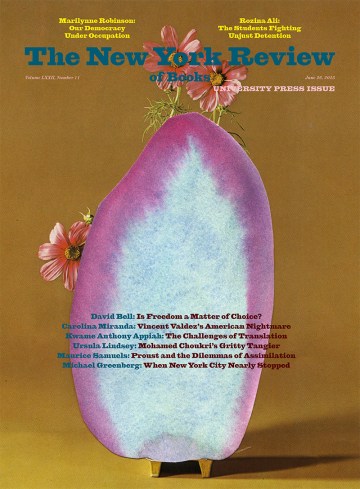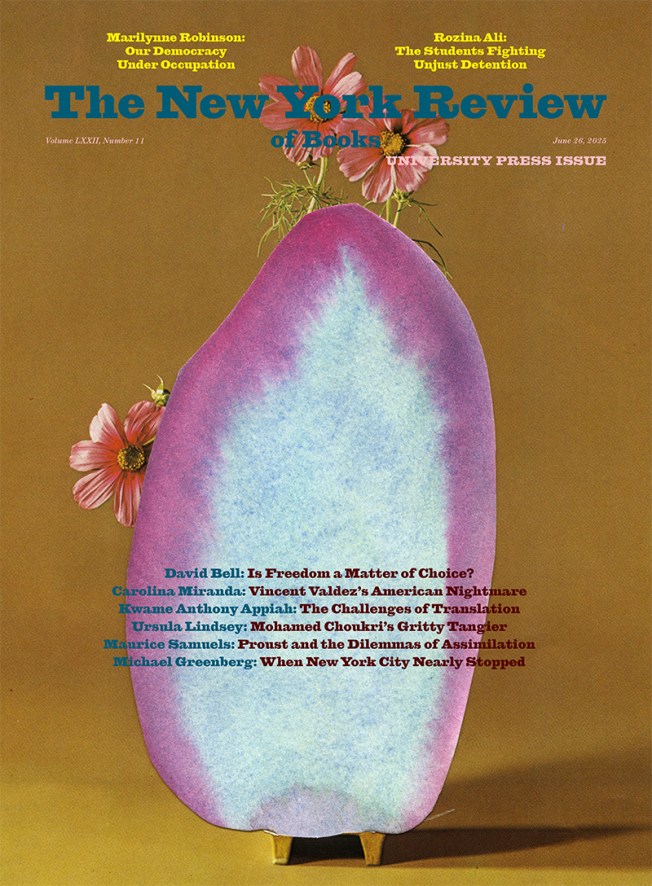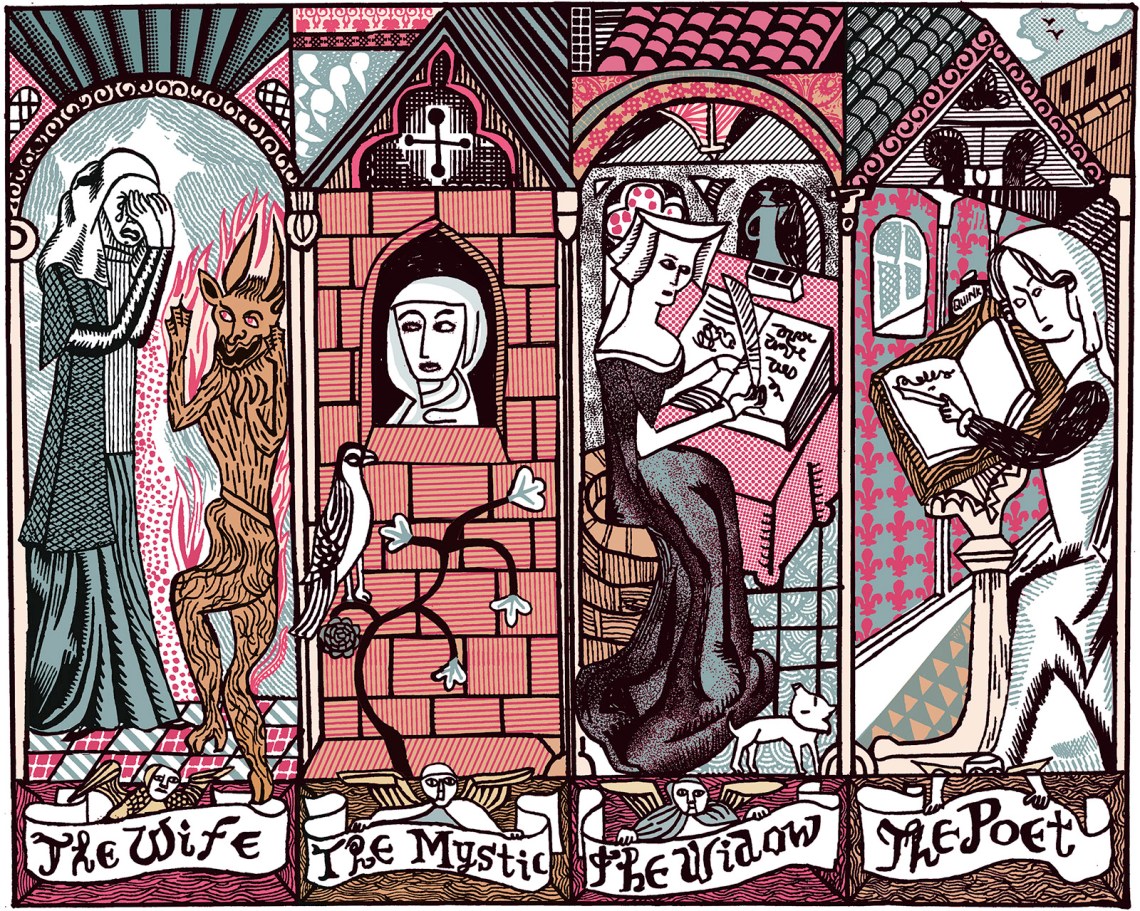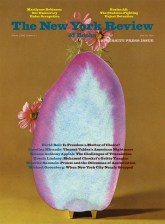On Midsummer Eve 1413 Margery Kempe told her husband, “Truly, I would rather see you murdered than have sex with you again.” The duties of a provincial middle-class wife—brewing beer, making cheese, overseeing servants—no longer satisfied her. And as for the sex, Margery had already given birth fourteen times and, aged only forty, had every reason to dread further pregnancies. Besides, there was by this time another man in her life: Jesus Christ.
Eventually John Kempe agreed to Margery’s sex ban, although not before telling her that she was a “no good wife.” It likely sealed the deal that she agreed to pay off his debts, possibly with money inherited from her father the previous year. Nonetheless, the vehemence of Margery’s declaration that she was willing to see her husband murdered—beheaded, to be precise—seems shocking, as does the bold and sometimes barely sane tone of The Book of Margery Kempe, in which the incident is described. The Book is routinely billed as the first autobiography in English, although this needs to be qualified: Kempe was illiterate, so she can hardly be said to have written anything. She dictated her account to two clerical scribes, who altered it in ways we can only imagine in order to bring her narrative, written in demotic Middle English rather than churchy Latin, closer to what they thought a spiritual autobiography ought to be.
Despite that meddling, the strangeness remains. Kempe’s declarative, fantastical telling stands in stark contrast to the typically polished hagiographies of female saints and holy women that survive from the Middle Ages. On one occasion the archbishop of York tells Kempe that she is a wicked woman, and she snaps back, “Sir, I also hear it said that you are a wicked man.” The Book of Margery Kempe is distinct even from the texts written by the other “extraordinary” women who together form the nominal subject of Hetta Howes’s Poet, Mystic, Widow, Wife. These are Julian of Norwich (the mystic), Christine de Pizan (the widow), and Marie de France (the poet), leaving Kempe, ironically, as the wife, albeit one who is “no good.”
Although her four subjects lived between the twelfth and fifteenth centuries, Howes moves freely among material that stretches from 1045 (the birth of the saintly Queen Margaret of Scotland) to 1736 (the publication of a legal treatise declaring that a man cannot be guilty of raping his wife). Howes’s second titular figure was both a contemporary of Kempe and a distant neighbor. Julian of Norwich was an anchoress, one of that remarkable subset of devout Christian women who spent their days bricked up in a cell attached to a church, which was considered not a punishment but a privilege. Living alone and at her own expense, Julian passed her waking hours in prayerful contemplation of the world to come. This was not only to advance her own salvation but also to serve the spiritual seekers who, attracted by Dame Julian’s reputation for approachable holiness, came from all over the kingdom to whisper their dilemmas through a small slit in her cell wall.
In 1413 Margery Kempe was one of those pilgrims, traveling the fifty miles from Bishop’s Lynn to Norwich, medieval England’s second city. She was, we would say today, in crisis. Not only had she recently gone on sexual strike, but her practice of demonstrating her devotion to God by weeping and wailing at church and in the streets had brought down the wrath of clergy and laity alike. Such performative piety came perilously close to “preaching,” an activity that was explicitly forbidden to women and had a strong whiff of Lollardy, a proto-Protestant sect that emphasized personal devotion over priestly authority. Even more destabilizing, from Kempe’s point of view, was the accusation by some particularly exasperated onlookers that her ecstatic whoops and hollers were prompted not by the Holy Spirit but by the Devil. Terrified that she might indeed be possessed by the Evil One, Kempe set out to seek a second opinion.
During their meeting, which lasted several days, Julian counseled her to continue with her fervent gospeling, reassuring her that her tears (of which there were many) were a sign of God working upon her soul: “The more contempt, shame and reproof you have in the world, the more is your merit in the sight of God.” Confirmation bias was doubtless at work; Kempe had a habit of hearing exactly what she wanted to hear. At the same time, Julian’s willingness to have “much holy conversation in talking about the love of our Lord Jesus Christ” is consistent with the anchoress’s testimony of her own “shewings,” or divine visitations.
In 1373, at the age of “thirty and a half,” Julian became so ill—the plague was ripping through Norwich—that she “did not expect to live until morning.” As her eyesight dimmed, the dying woman became aware of Jesus in her bedroom, holding out a homely hazelnut to illustrate how he kept the world safe in the palm of his hand. On another visit he stretched open the wound in his side to make a place of refuge for all humankind. Throughout her account, which she set down as Revelations of Divine Love, Julian characterizes Jesus as a “Mother” who feeds his flock as a woman nurses her child, “most courteously and most tenderly.” Her famous phrase “All shall be well, and all manner of things shall be well” entered the canon of twentieth-century consolatory wisdom when T.S. Eliot used it in his poem “Little Gidding” in 1942. (It also went viral on Instagram during the early days of the pandemic.)
Advertisement
These two devout Englishwomen are joined in Howes’s schema by two Frenchwomen who lived centuries apart and whose relationship with God can best be described as conventional. Christine de Pizan was a well-born young woman who dealt with the loss of her husband in 1389 by setting herself up as a writer at the court of King Charles VI. Celebrated for her many works of poetry and prose, Pizan supervised the production of her own manuscripts, advertised her authorship, commissioned publicity pictures, and carefully cultivated patronage among the French elite by dedicating her books to Princess Margaret of Burgundy and the Duke of Orléans.
Her most famous work is The Book of the City of Ladies (circa 1405), an extended allegory in which the narrator, with the help of Lady Reason, Lady Rectitude, and Lady Justice, assembles a group of famous historical female figures to refute all the tired old misogynies: that women can’t keep a secret, prefer gossip to dialogue, are atrocious nags and constitutionally disloyal. These were, Pizan declared, nothing but “an outrageous pack of lies.” The arrival of each illustrious guest, including the Queen of Sheba, Mary Magdalene, and Circe, allows her to build an argument (and a book) about women’s innate capacity to learn, inspire, teach, and become full and valued members of society.
The final member of Howes’s quartet is Marie de France. She was born two hundred years before the others, and her biographical details are even sketchier. Modern scholarship has identified Marie as the author of three, perhaps four, hugely popular texts that circulated at the English court of Henry II and his French wife, Eleanor of Aquitaine. The most famous of these is the Lais, a collection of fables and fairy tales written in the late twelfth century that established the foundation of the romance tradition of the High Middle Ages. They are full of glittering courts and enchanted forests, pretty women and brave knights, talking animals, fairy queens, and one unfortunate young Breton named Bisclavret, who spends three nights each week as a werewolf.
At the outset of her book Howes, who is a lecturer at the University of London, announces her intention to “uncover the lives” of the four women of her title, since they “have been overlooked or even forgotten.” This is oddly put, given that these four have been the subjects of a stream of accessible biographies and critical editions since the 1990s, when feminist scholarship in medieval studies experienced an upsurge that continues to this day. It would be more accurate to describe Howes’s project as a survey of female experience in the later Middle Ages, using the writings of her four figures as hooks for themed chapters on childbirth, marriage, religious life, and friendship. Along the way she draws on medical treatises, law books, saints’ lives, theological works, court records, and poetry, nearly all written by men. It is the tension between these different kinds of writing, much of it about women rather than by them, that both propels the book forward and takes it down some dead ends.
In the chapter on sex and pregnancy—“Knocked Up”—Howes starts with Kempe’s famously grim account of giving birth to her first child around 1394. The labor was grueling to the point that the terrified young woman “despaired of her life” and believed she might die. From here Howes surveys medieval writings on childbirth, which were mostly still indebted to classical sources.* A particularly influential book at the time of Kempe’s confinement was De secretis mulierum, or “Women’s Secrets” (written in Latin to ensure that few actual women could read it), in which the Dominican friar Albertus Magnus, influenced by Aristotle and Galen, arrives at his working hypothesis that a woman is nothing more than “a failed man” with a “defective nature.”
One of the more pernicious ideas about female sexuality in circulation at this time was that a woman had to have an orgasm in order to conceive. This nullified a pregnant woman’s chance of legally separating from her husband or prosecuting her rapist since, in either case, her evident pleasure in the sexual act implied consent. Theologians such as Hugh of St. Victor had long pondered the vexatious possibility that the Virgin Mary had experienced an orgasm at the time of Jesus’ conception. Other authorities preferred to leave the details of holy reproduction vague and concentrate instead on the fact that childbirth was supposed to hurt, bringing women like Kempe to the brink of death as a stinging reminder of Eve’s original sin.
Advertisement
Hoping to find a medieval woman “writing back” against the medical misogyny of Albertus and Hugh, Howes casts her net wide. But the results are scanty. Even a potentially promising source such as Trota, a female “general practitioner of medicine” from twelfth-century Salerno, offers a view of parturition that borders on body horror: “There are some women in whom the vagina and the anus become one opening and the same pathway. Whence in these women the womb comes out and hardens.” Trota also suggests relieving labor pain by placing a snakeskin on the woman’s belly, which, while Howes is silent on this point, seems to send us straight back to Eve’s transgression in the Garden of Eden.
Altogether more fruitful are those places where Howes finds women not so much standing up to misogyny as sneaking around it. She recounts the case of a newly widowed Spanish noblewoman named Isabel de la Cavallería who in 1490 was about to give birth to her late husband’s child. To ensure that the baby, should it be a boy, would be recognized as the legitimate heir to his father’s fortune, Isabel invited a male notary named Domengo de Cuerlo to be present—spectacularly overriding the conventions of the birthing chamber, which was typically required to be sequestered, dimly lit, and attended only by the laboring woman’s “godsibs,” or “sisters in God”: female relatives, neighbors, and friends. Isabel insisted that this was no time for coyness. Cuerlo was instructed to look up the skirts of all the women present, including the midwives, to make sure that no baby had been smuggled in to substitute for a stillbirth. In a gesture of radical transparency, the windows were thrown open to allow passersby to act as impromptu witnesses.
Since evidence of medieval women’s lives is still so scattered in the archive, the few places where Howes is able to show texts in conversation with one another are especially precious. It is good to be reminded that Christine de Pizan’s high-minded City of Ladies was conceived as a direct response to Le Roman de la rose, the casually misogynistic allegory of romantic love that famously declares, “All you women are, will be, and have been whores.” Trickier for Howes, who remains anxious to identify places where women resist or write back to problematic texts, is the fact that Pizan’s protofeminism was tightly circumscribed by her social conservatism. She repeatedly exhorts her readers to ignore their husbands’ “perverse and rude behaviour” because “you must live and die with him whatever he is like.”
Pizan’s writing is hierarchical and exclusionary, using rhetorical strategies to ensure that the hoi polloi were kept out of her utopia of elite women. In The Treasure of the City of Ladies, written the year after The City of Ladies to capitalize on its commercial success, she holds up for censure a Parisian grocer’s wife who has gone too far in primping her birthing chamber as if she were a gentlewoman: “Two very fine chambers” have been stuffed with silver and gold vessels, and her bed has been hung with linens worth “three hundred francs.” Pizan is adamant that this cautionary tale “is worth putting in a book” as a warning to those middle-class women tempted to ape the lifestyles of the rich and famous.
Other puzzles and inconsistencies follow thick and fast. Howes sets before us the example of Jeanne de Montbaston, a successful Parisian bookseller who in 1325 busied herself drawing illustrations for deluxe copies of Le Roman de la rose. One of these drawings shows a comically well-endowed monk offering his penis to a nun who looks singularly unimpressed. Another illustration, the most famous, depicts that same nun picking fruit from a tree hung with large red-tipped penises, and placing them safely in her basket. Does this make Montbaston a casualty of a misogynistic culture that forced her to internalize its values in order to survive commercially? Or is this evidence that she was, to use one of Howes’s favorite terms, a “hustler,” a resourceful entrepreneur who had spotted a gap in the market for pornographic pictures with a literary twist?
Rather than leaning into these ambiguities and contradictions, Howes insists on seeing the women in her book as twenty-first-century feminists who happen to wear wimples. In addition to Christine de Pizan being a “hustler,” Julian of Norwich is a woman who wants to “shut herself away to get some work done.” (Virginia Woolf’s A Room of One’s Own gets an inevitable mention here.) Margery Kempe, who experienced six months of terrifying visions involving flame-breathing devils after the birth of her first baby, is said to be suffering from “post-natal psychosis,” a theory that became popular in the 1990s when Kempe studies began to flourish in the academy.
This insistence on making medieval subjects “relatable” accounts for Howes’s awkward use of vernacular in her chapter titles. In addition to “Knocked Up” for the section on pregnancy, there is “Bit on the Side” for a chapter on adultery. Two consecutive chapters concerning patronage and networking are called “Making Friends…” and “…And Influencing People,” which look back to Dale Carnegie’s Depression-era self-help manual. In a section called “Having It All?,” Howes discusses how Pizan was “struggling…to carve out space and time to juggle all the different roles she was attempting to play,” which makes her sound like a modern woman climbing the corporate ladder rather than a medieval aristocrat. Elsewhere references to Buffy the Vampire Slayer, Roxane Gay, and, oddest of all, Tammy Wynette are deployed. Isabeau, Queen of France, is an “influencer.” There is even a nod to Sex and the City in the use of Carrie Bradshaw’s unofficial catchphrase “And just like that…”
As the book draws to a close, this attempt to bridge the gap between then and now reaches a fever pitch. In the jarring final pages, we are asked to imagine how the four subjects might feel if they time-traveled to the twenty-first century and were confronted with “the gender pay gap, the everyday sexism, the discrimination against the LGBTQIA+ community and women of colour.” From here Howes sketches a summary of women’s lives today, taking in everything from the erosion of abortion rights in the United States to sexist reporting on the 2022 meeting between Jacinda Ardern and Sanna Marin, then the prime ministers of New Zealand and Finland, respectively.
This anxious presentism, imposing the values of our own day onto the past, may not be entirely Howes’s doing. Trade publishing puts enormous pressure on historians, especially female historians, to produce books predicated on the assumption that, in Howes’s words, “hundreds of years ago men and woman felt the same yearnings as we do today.” But such essentialism blinds—and deafens—us to what the shreds of surviving evidence might tell us about the experience of being human in very distant times. The four women whose lives make up the cornerstones of this book can never be fully known. But they can, if we are able to listen without talking over them, give us hints and whispers of a world that is all the richer and stranger for being so different from our own. And it is in hearing that difference that we become open to a future that remains, for now, thrillingly unimaginable.
This Issue
June 26, 2025
‘They’re Here to Detain Me’
Notes from an Occupation
-
*
For more on childbirth in pre-Reformation Europe, see Catherine Nicholson’s “Right Busy with Sticks and Spales,” The New York Review, June 22, 2023. ↩




